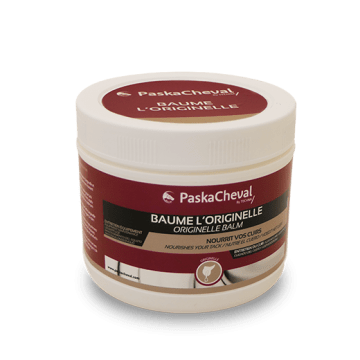Whether you ride for pleasure or competitively, it is essential to choose a good-quality saddle and bridle to get the most out of your horse riding. Once you have made the investment, it’s important to know how to care for your tack properly, to ensure its longevity with no risk of injury to either horse or rider. Here is what our experts advise on the subject:
Why does leather riding tack require special care?
Leather saddles and bridles have the same properties as skin. They need to be regularly cleaned and moisturised. It is important to check the condition of your tack and care for it regularly. Damaged or cracked leather can injure your horse. Worn leather can also be a danger to the rider’s safety since it could break.
The leather used for the tack has to withstand some very challenging conditions. Dust, mud, sand, rain, as well as the sweat of both horse and rider adversely affect the leather’s quality. Dust, for example, can build up and become abrasive. And the acidity of sweat can leave marks and corrode the tack. To maintain the longevity and suppleness of leather it is therefore necessary to clean it regularly.
There are also some particularly sensitive areas on saddles and bridles. These areas, subject to regular friction, are prone to abrasion: at the bottom of the boots, stirrup leathers and the saddle flaps at the girth straps. This friction causes discolouration or rubbing away of the leather grain. After cleaning, it is therefore highly recommended that leathers be oiled. Oil has the property of nourishing leather deep down and polishing its surface to protect it.

How to perform routine leather tack care
Caring for leather is relatively simple and involves two phases: cleaning followed by oiling to condition it.
Our experts recommend cleaning after at least every second use in a sports context. It is important to look after the most exposed areas (in contact with the horse and the rider), liable to be damaged by sweat. Leather cannot be cleaned too often, as long as the right products are used.
Cleaning leather tack
The cleaning phase removes dirt to allow the oil to be absorbed by the leather and nourish it deep down. If necessary, you can brush heavily soiled leather. We recommend the use of glycerine soap. As its name indicates, glycerine soap contains glycerine. This is produced by a saponification (soap-making) reaction. In addition to cleaning, it moisturises and protects leather.
Liquid soaps are designed for application to dry leather. They are applied using a slightly moistened sponge. They do not require drying, therefore. However, when soap bars are used, more water is generally required. In this case, the leather must be left to dry completely at room temperature (never next to a direct heat source to prevent it from drying out or becoming misshapen).

Conditioning leather tack
The second phase involves conditioning the leather using a balm applied with a sponge or dry cloth. This stage must be carried out on dry leather to promote its absorption and ensure deep-down action. Care must be taken to use suitable products in reasonable quantities. Too much oil leaves the leather greasy and encourages the buildup of dirt. The tack becomes less pleasant to use for the rider (slippery and soiling).
Various types of products are used to condition leather. Beeswax has some very useful properties for leather tack. It provides deep-down nourishment, while at the same time shining the leather to promote friction.
With its soaps, oils and balms, Paskacheval proposes a whole range of carefully formulated products specially tailored for leather tack care. Find them at your nearest distributor.
Where to find Paskacheval products?
Find your nearest sales outlet
Paskacheval is a range of plant-based feed supplements and external care products designed to enhance the performance and well-being of every horse.


